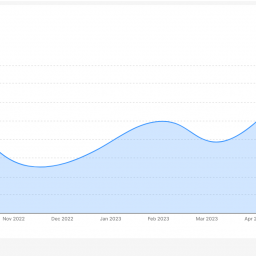Workforce Management Software for Healthcare and Shift-Based Industries
In industries that operate on shift-based schedules, such as healthcare, hospitality, manufacturing, and retail, managing the workforce efficiently and effectively is paramount to maintaining high-quality services and operations. The complexities of scheduling, time tracking, compliance, and employee management can be overwhelming for administrators and HR teams in such industries. To address these challenges, workforce management software has emerged as a powerful tool, offering comprehensive solutions to streamline operations and optimize workforce productivity. In this article, we explore the benefits and applications of workforce management software in healthcare and shift-based industries.
1. Efficient Shift Scheduling
In healthcare and shift-based industries, creating accurate and balanced shift schedules is crucial to ensuring adequate coverage at all times. Workforce management software provides advanced scheduling capabilities that take into account employee availability, skills, certifications, and preferences. By automating the scheduling process, administrators can significantly reduce the time and effort required to manage complex shift rotations.
Moreover, the software allows for real-time updates and adjustments, facilitating seamless shift swaps and replacements, which is especially vital in industries with frequent last-minute changes.
2. Staffing Compliance and Certifications
Compliance with labor laws and industry regulations is a top priority in healthcare and shift-based industries, where adherence to certifications, training requirements, and overtime rules is essential. Workforce management software can automate compliance checks, ensuring that employees have the necessary certifications and training to perform their roles.
The software can also monitor and enforce overtime limits, break times, and other labor regulations, reducing the risk of non-compliance and associated penalties.
3. Time and Attendance Tracking
Accurate time and attendance tracking are critical in industries where labor costs are closely tied to employee work hours. Workforce management software provides various options for time tracking, including biometric devices, mobile apps, and web-based interfaces. Employees can easily clock in and out, and the software automatically records the data for payroll processing.
Real-time tracking ensures precise labor cost calculations, eliminates manual errors, and reduces the potential for time theft or buddy punching, leading to more efficient payroll processes.
4. Overtime and Labor Cost Management
Overtime expenses can quickly escalate in shift-based industries. Workforce management software helps control and manage overtime by setting predefined thresholds and automatically alerting supervisors when employees approach or exceed these limits.
By optimizing overtime usage and avoiding unnecessary overtime costs, organizations can significantly reduce labor expenses while maintaining workforce productivity.
5. Employee Self-Service and Empowerment
Workforce management software often includes employee self-service portals, allowing employees to access their schedules, request time off, and swap shifts with colleagues. Empowering employees with self-service capabilities enhances their sense of autonomy and ownership over their work schedules, contributing to higher job satisfaction and engagement.
Moreover, self-service features streamline administrative tasks, as employees can manage their own schedule changes and time-off requests, reducing the burden on HR and management.
6. Patient and Customer Experience
In industries where the workforce directly interacts with customers or patients, such as healthcare and hospitality, employee satisfaction and well-being can significantly impact customer experience. Workforce management software enables administrators to create schedules that balance employee workloads and prevent burnout, leading to better service quality and improved customer satisfaction.
Additionally, when employees have a better work-life balance and feel supported by efficient scheduling practices, they are more likely to provide exceptional care and service to patients and customers.
7. Performance Management and Training
Workforce management software can be integrated with performance management systems, enabling organizations to set goals, track employee performance, and provide timely feedback. The software can also identify training needs and automate the delivery of training materials and courses to employees.
Effective performance management and training contribute to a skilled and motivated workforce, ultimately leading to improved patient outcomes, higher customer satisfaction, and increased productivity.
Conclusion:
In healthcare and shift-based industries, where workforce management complexities are heightened by round-the-clock operations, workforce management software is a game-changer. By optimizing shift scheduling, enforcing compliance, improving time and attendance tracking, managing overtime and labor costs, empowering employees with self-service options, enhancing patient and customer experiences, and supporting performance management and training, this software streamlines operations and enhances workforce efficiency.
The adoption of workforce management software is not just a technological upgrade; it represents a strategic investment in maximizing workforce productivity and service quality while minimizing operational costs. As healthcare and shift-based industries continue to evolve and grow, workforce management software will remain an indispensable tool for maintaining a competitive edge, delivering exceptional services, and fostering a positive and productive work environment for employees.
















